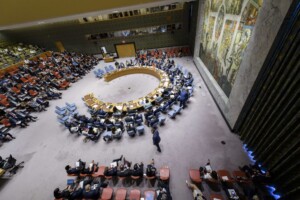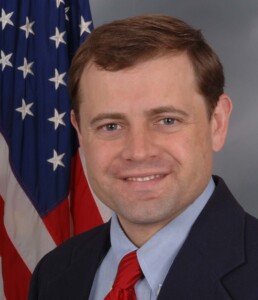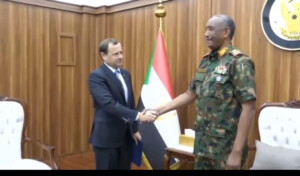Sudan Leaks: Ethnic killings at Sigili in 2012
The killing of at least ten people in Sigili in North Darfur in November 2012 was likely ethnically motivated, according to internal UN investigation documents, the findings of which were never made public until now. The documents, obtained by Radio Dabanga, point to the ethnic nature of the killings carried out by government paramilitary forces at the North Darfur village a year and a half ago, as well as the threats which the peacekeepers faced while seeking to investigate the killings. Ten bodies of victims of the attack were carried by protesting relatives to the gates of the El Fasher headquarters of UNAMID, the African Union-United Nations joint peacekeeping mission in Darfur. The protesters demanded the case be investigated and also claimed that the killings were intended to purge Zaghawa residents from areas south of El Fasher. After this protest, the UN began investigating the Sigili incident. It sent an assessment team to the village, which is located about 30 kilometres (19 miles) southeast of El Fasher, the capital of North Darfur. The findings of this team were summed up in a report dated 6 November, which stated that a group of about 15 attackers mounted in three vehicles killed ten persons, all men, burnt 12 houses, killed one cow, five camels, and three donkeys, and shot an 11-year old girl in the leg. “Sigili was found/remains deserted and there were signs of abrupt departure,” the investigators reported. They added: “The motive of the attack could have ethnic dimension targeting Zaghawas.” ‘Direct reprisal against the Zaghawa tribe’ Hassan Gibril, the Head of Office of UNAMID Sector North, later in a weekly report for the period 4-10 November described the attack as a “direct reprisal against the Zaghawa tribe,” citing a senior Sudanese official. In his report, the UN official wrote that mission personnel met on 8 November with Alrasheed Mekk, an advisor to the North Darfur governor. “Mr. Alreasheed believes that the recent wave of violence in the Sigili and Kalmindo locality in general could be seen as a direct reprisal against the Zaghawa tribe,” stated the UNAMID sector chief in his report. “The reason for such reprisal attacks goes back to the period of the Zaghawa dominance (SLA/MM) in the area following the DPA in 2006. During that period the SLA/MM committed human rights violations against the population in the area which resulted in hatred against the Zaghawas in general,” the Sudanese official was quoted as saying. “Mr. Alrasheed went on explaining that now that the population of the area was in a stronger position, the time seemed right for them to bring back old grievances against the Zaghawas,” he added. ‘Any Zaghawa would be killed immediately’ UN investigators reported on 6 November that during their visit to Sigili and surrounding areas, including the village of Abu Delieg, they encountered Popular Defense Forces (PDF) who threatened the lives of members of the investigation patrol. The paramilitary forces threatened to kill Zaghawa individuals who were guiding the mission. The assessment team reported that they “encountered the PDF on the way who clearly pointed out that they will kill on the spot any Zaghawas in the UNAMID convoy and they went ahead to ask the tribes of some national staffs.” “The ethnic hatred was further evident by the PDF’s act of looking into some UNAMID vehicles to cross-check for Zaghawas and also questioning, thrice if UNAMID visited Sigili before proceeding to Abu Delek,” added the report. UNAMID Sector North reported that peacekeepers allowed the militia to search their vehicles and question their national staff: “The PDF were allowed to search the UNAMID convoy cars and APCs. Each national staff was asked, rather aggressively, of their tribal affiliation but no Zaghawa was positively identified. In conclusion, the mission achieved its verification objective.” Another document shows that orders to deny access to UN investigators also came from higher up in the Sudanese government. Aïchatou Mindaoudou, the deputy mission chief, cabled to the UN Under-Secretary-General for Peacekeeping Operations on 7 November saying that the governor himself gave orders to prevent UNAMID from going to investigate the site. In her dispatch, Mindaoudou explained that UN officials protested to the governor after peacekeepers were turned back from a checkpoint on the road to Sigili. The governor is quoted as telling officials, “The state security committee could not allow UNAMID to go to areas that were considered to be too dangerous.” In response to this incident the peacekeeping mission presented a formal protest letter to the Ministry of Foreign Affairs in Khartoum on 6 November 2012. Photo: Mourners and victims of the Sigili attack (Radio Dabanga)
The killing of at least ten people in Sigili in North Darfur in November 2012 was likely ethnically motivated, according to internal UN investigation documents, the findings of which were never made public until now.
The documents, obtained by Radio Dabanga, point to the ethnic nature of the killings carried out by government paramilitary forces at the North Darfur village a year and a half ago, as well as the threats which the peacekeepers faced while seeking to investigate the killings.
Ten bodies of victims of the attack were carried by protesting relatives to the gates of the El Fasher headquarters of UNAMID, the African Union-United Nations joint peacekeeping mission in Darfur. The protesters demanded the case be investigated and also claimed that the killings were intended to purge Zaghawa residents from areas south of El Fasher.
After this protest, the UN began investigating the Sigili incident. It sent an assessment team to the village, which is located about 30 kilometres (19 miles) southeast of El Fasher, the capital of North Darfur.
The findings of this team were summed up in a report dated 6 November, which stated that a group of about 15 attackers mounted in three vehicles killed ten persons, all men, burnt 12 houses, killed one cow, five camels, and three donkeys, and shot an 11-year old girl in the leg.
“Sigili was found/remains deserted and there were signs of abrupt departure,” the investigators reported. They added: “The motive of the attack could have ethnic dimension targeting Zaghawas.”
‘Direct reprisal against the Zaghawa tribe’
Hassan Gibril, the Head of Office of UNAMID Sector North, later in a weekly report for the period 4-10 November described the attack as a “direct reprisal against the Zaghawa tribe,” citing a senior Sudanese official.
In his report, the UN official wrote that mission personnel met on 8 November with Alrasheed Mekk, an advisor to the North Darfur governor.
“Mr. Alreasheed believes that the recent wave of violence in the Sigili and Kalmindo locality in general could be seen as a direct reprisal against the Zaghawa tribe,” stated the UNAMID sector chief in his report.
“The reason for such reprisal attacks goes back to the period of the Zaghawa dominance (SLA/MM) in the area following the DPA in 2006. During that period the SLA/MM committed human rights violations against the population in the area which resulted in hatred against the Zaghawas in general,” the Sudanese official was quoted as saying.
“Mr. Alrasheed went on explaining that now that the population of the area was in a stronger position, the time seemed right for them to bring back old grievances against the Zaghawas,” he added.
‘Any Zaghawa would be killed immediately’
UN investigators reported on 6 November that during their visit to Sigili and surrounding areas, including the village of Abu Delieg, they encountered Popular Defense Forces (PDF) who threatened the lives of members of the investigation patrol.
The paramilitary forces threatened to kill Zaghawa individuals who were guiding the mission. The assessment team reported that they “encountered the PDF on the way who clearly pointed out that they will kill on the spot any Zaghawas in the UNAMID convoy and they went ahead to ask the tribes of some national staffs.”
“The ethnic hatred was further evident by the PDF’s act of looking into some UNAMID vehicles to cross-check for Zaghawas and also questioning, thrice if UNAMID visited Sigili before proceeding to Abu Delek,” added the report.
UNAMID Sector North reported that peacekeepers allowed the militia to search their vehicles and question their national staff: “The PDF were allowed to search the UNAMID convoy cars and APCs. Each national staff was asked, rather aggressively, of their tribal affiliation but no Zaghawa was positively identified. In conclusion, the mission achieved its verification objective.”
Another document shows that orders to deny access to UN investigators also came from higher up in the Sudanese government. Aïchatou Mindaoudou, the deputy mission chief, cabled to the UN Under-Secretary-General for Peacekeeping Operations on 7 November saying that the governor himself gave orders to prevent UNAMID from going to investigate the site.
In her dispatch, Mindaoudou explained that UN officials protested to the governor after peacekeepers were turned back from a checkpoint on the road to Sigili. The governor is quoted as telling officials, “The state security committee could not allow UNAMID to go to areas that were considered to be too dangerous.”
In response to this incident the peacekeeping mission presented a formal protest letter to the Ministry of Foreign Affairs in Khartoum on 6 November 2012.
Photo: Mourners and victims of the Sigili attack (Radio Dabanga)









 and then
and then